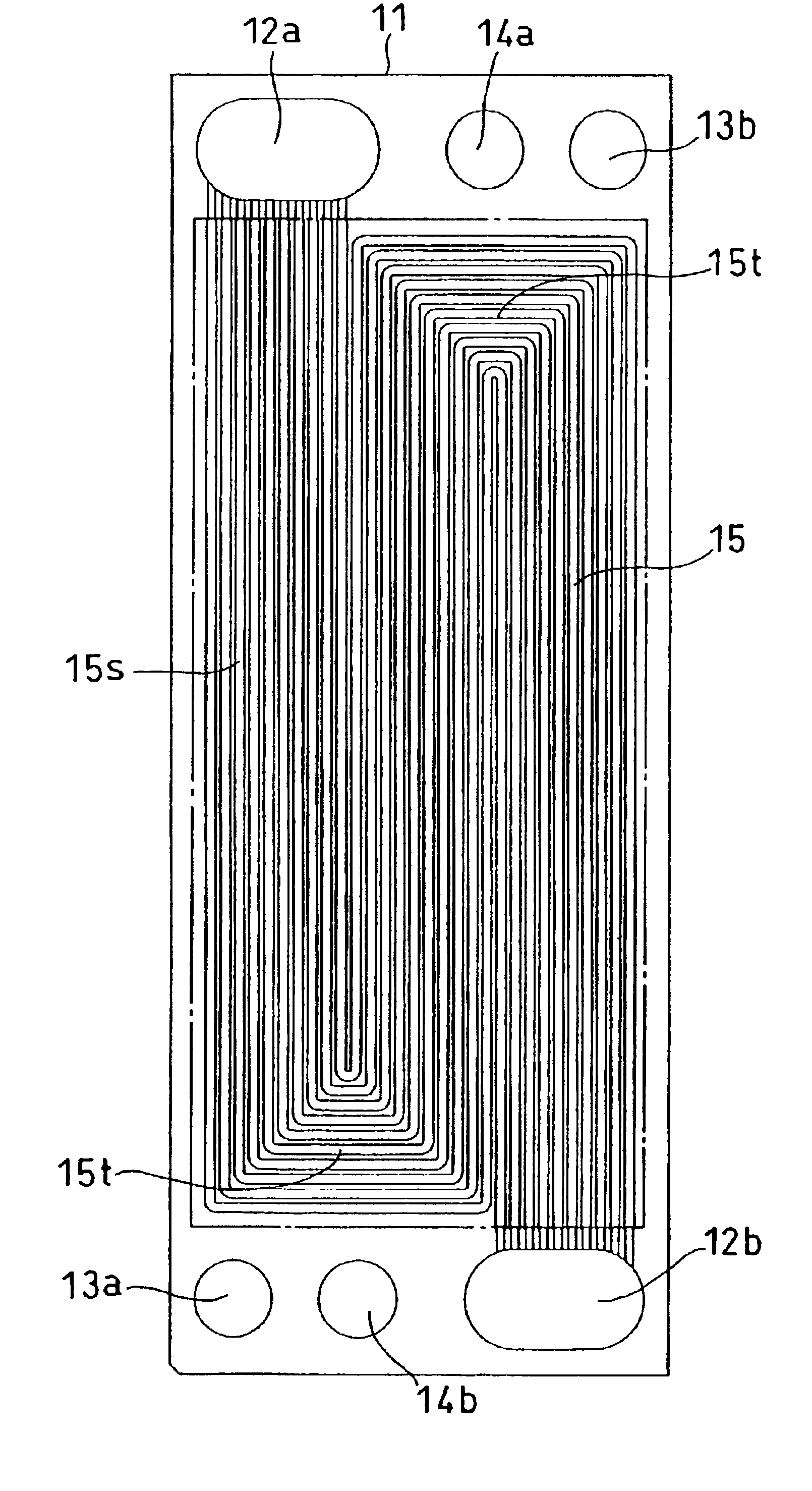Polymer electrolyte fuel cell
a fuel cell and electrolyte technology, applied in the field of polymer electrolyte fuel cells, can solve the problems of reducing the removal efficiency of generated water, deteriorating cell performance, and affecting cell performance, and achieve the effect of improving the conductive separator
- Summary
- Abstract
- Description
- Claims
- Application Information
AI Technical Summary
Benefits of technology
Problems solved by technology
Method used
Image
Examples
embodiment 1
[0060]FIG. 1 is a cross sectional view illustrating the main part of a fuel cell in this embodiment.
[0061]A fuel cell 1 is composed of unit cells comprising a hydrogen-ion conductive polymer electrolyte membrane 2 and a cathode 3 and an anode 4 sandwiching the electrolyte membrane 2, the unit cells being stacked with a conductive separator plate interposed therebetween. The conductive separator plates inserted between the cells comprises: a single separator plate 5 having oxidant gas flow channels 6 on one side and fuel gas flow channels 7 on the other side and thus having both functions of a cathode-side separator plate and an anode-side separator plate; and a composite separator plate composed of a separator plate 9a having the oxidant gas flow channels 6 on one side and cooling water flow channels 8 on the other side and a separator plate 9b having the cooling water flow channels 8 on one side and the fuel gas flow channels 7 on the other side. In this embodiment, the composite s...
embodiment 2
[0069]The following will describe another preferred embodiment of the conductive separator plate.
[0070]FIG. 5 is a front view of a cathode-side conductive separator plate. A separator plate 31 is a rectangle, wherein an oxidant gas inlet manifold 32a, a fuel gas inlet manifold 33a, and a cooling water inlet manifold 34a are arranged along one shorter side of the rectangle and an oxidant gas outlet manifold 32b, a fuel gas outlet manifold 33b, and a cooling water outlet manifold 34b are arranged along the other shorter side thereof. Gas flow channels 35 communicating with the oxidant gas inlet manifold 32a and the outlet manifold 32b are composed of 35 linear grooves.
[0071]FIG 6 is a front view of an anode-side conductive separator plate. A separator plate 41 is a rectangle, wherein an oxidant gas inlet manifold 42a, a fuel gas inlet manifold 43a, and a cooling water inlet manifold 44a are arranged along one shorter side of the rectangle and an oxidant gas outlet manifold 42b, a fuel...
embodiment 3
[0073]The following will describe another preferred embodiment of the cathode-side conductive separator plate with reference to FIGS. 7 to 9.
[0074]A separator plate 71 as shown in FIG. 7 has an oxidant gas inlet manifold 72a and an oxidant gas outlet manifold 72b along the shorter sides; in the vicinity of these manifolds along the longer sides, it has a fuel gas inlet manifold 73a, a fuel gas outlet manifold 73b, a cooling water inlet manifold 74a and a cooling water outlet manifold 74b. Gas flow channels 75 communicating with the oxidant gas inlet manifold 72a and the outlet manifold 72b are composed of linear grooves having a tapering width. Fuel gas flow channels and cooling water flow channels have a serpentine structure composed of liner parts and turns similar to FIG. 6.
PUM
 Login to View More
Login to View More Abstract
Description
Claims
Application Information
 Login to View More
Login to View More - R&D
- Intellectual Property
- Life Sciences
- Materials
- Tech Scout
- Unparalleled Data Quality
- Higher Quality Content
- 60% Fewer Hallucinations
Browse by: Latest US Patents, China's latest patents, Technical Efficacy Thesaurus, Application Domain, Technology Topic, Popular Technical Reports.
© 2025 PatSnap. All rights reserved.Legal|Privacy policy|Modern Slavery Act Transparency Statement|Sitemap|About US| Contact US: help@patsnap.com



